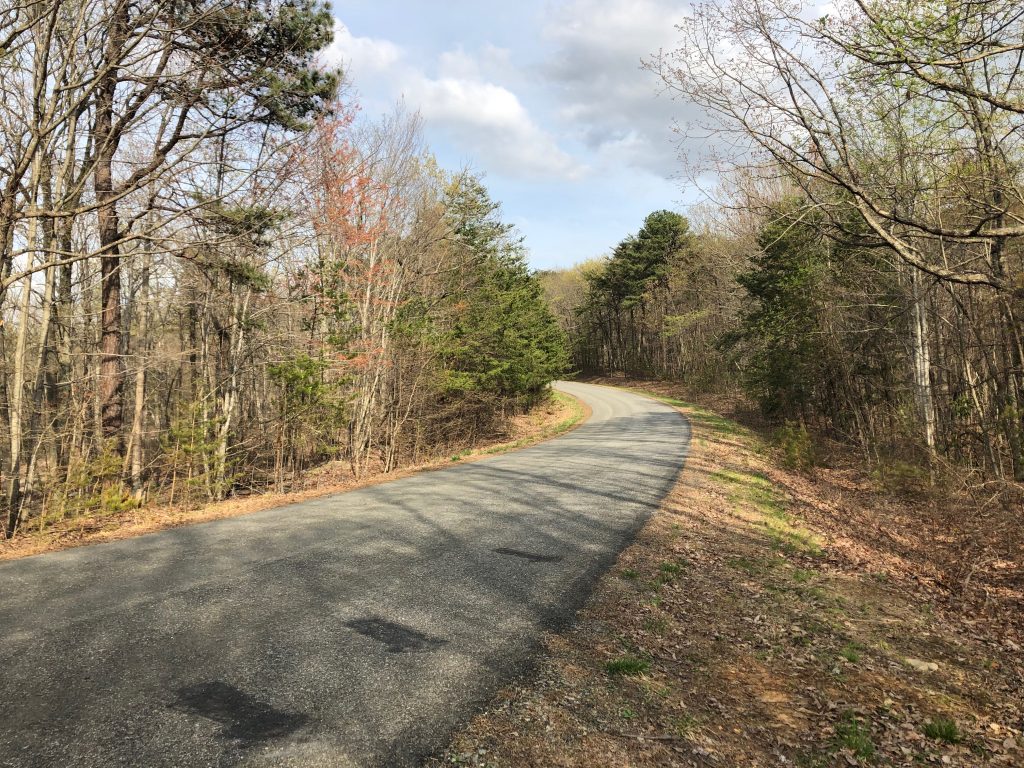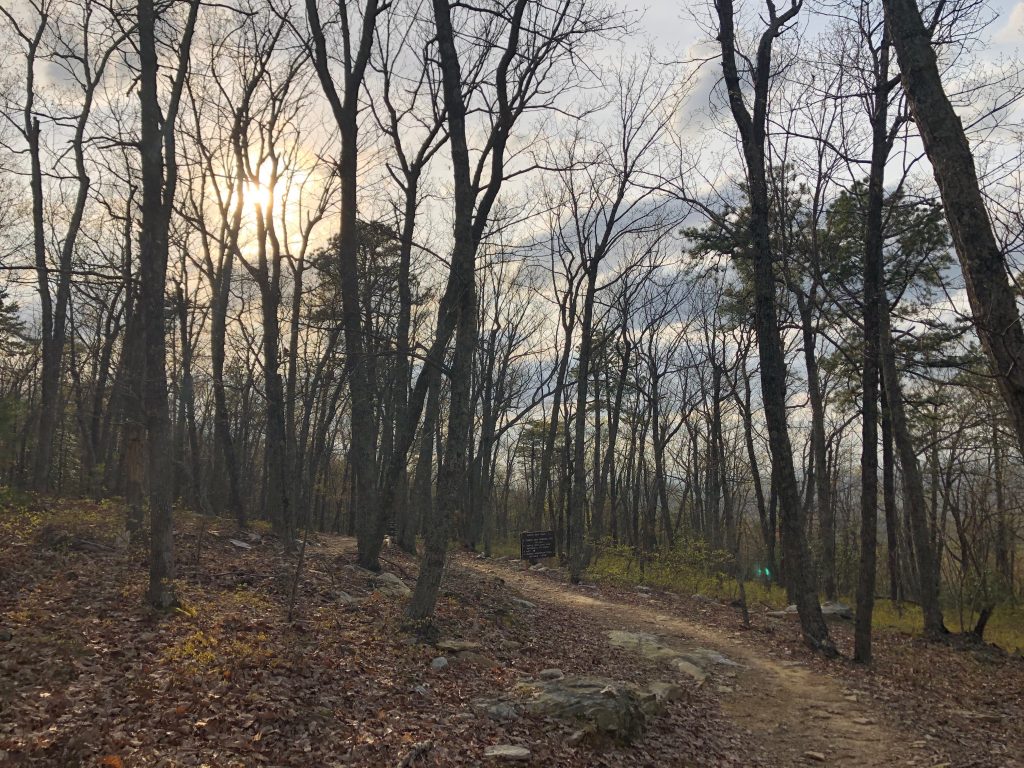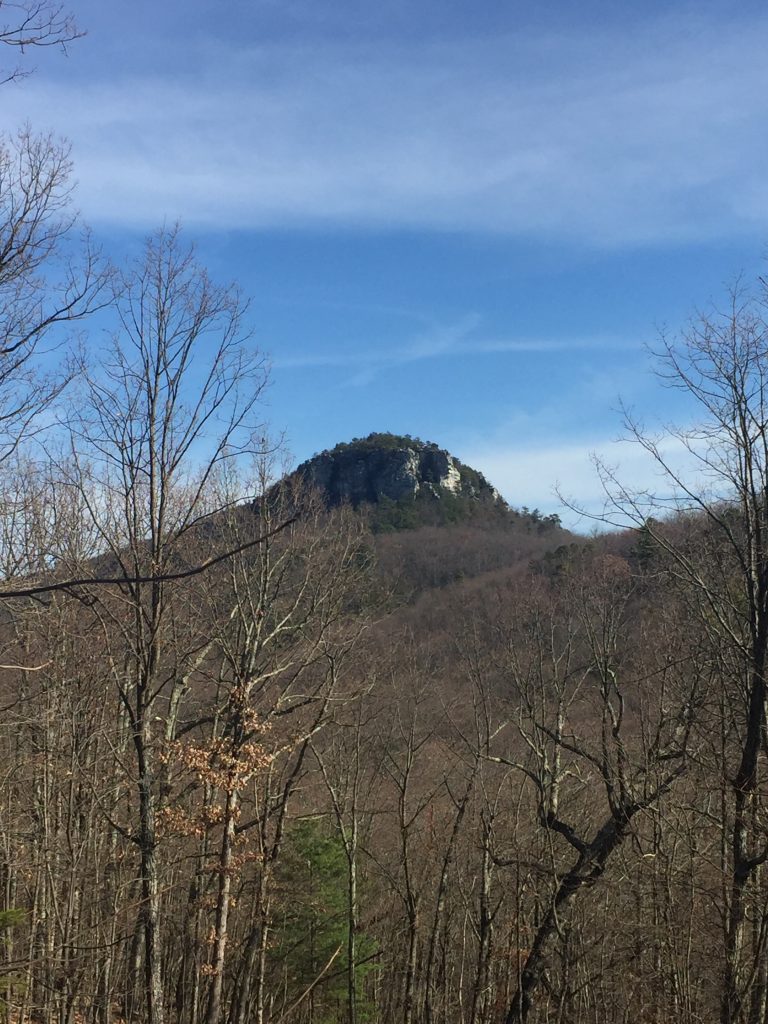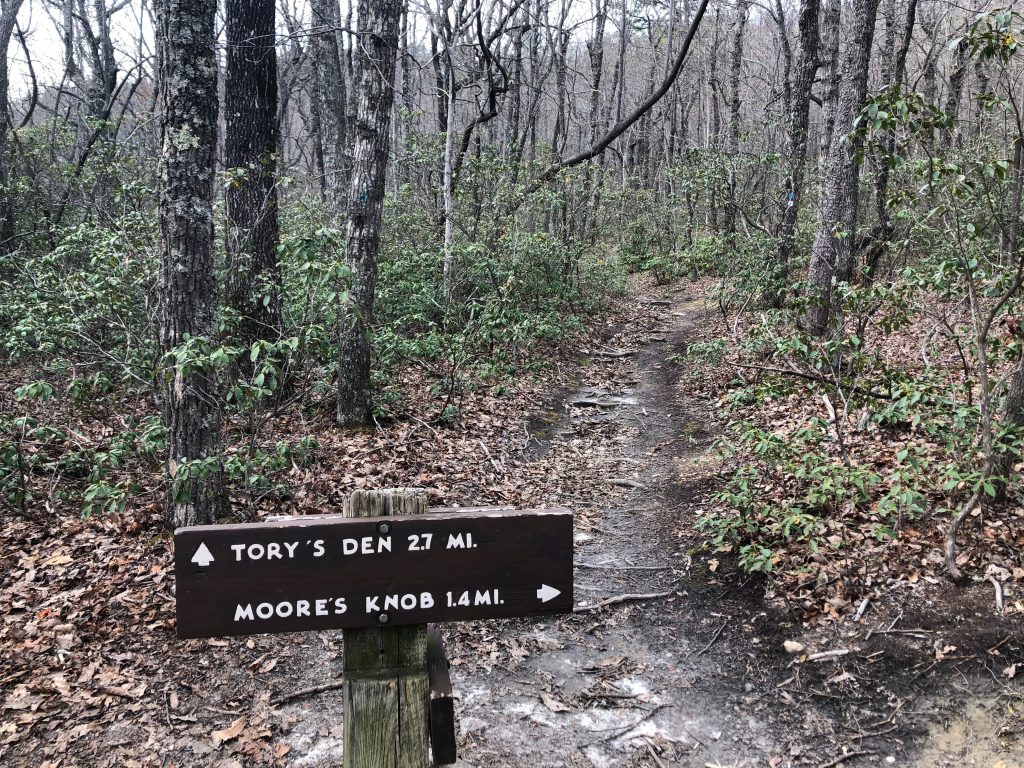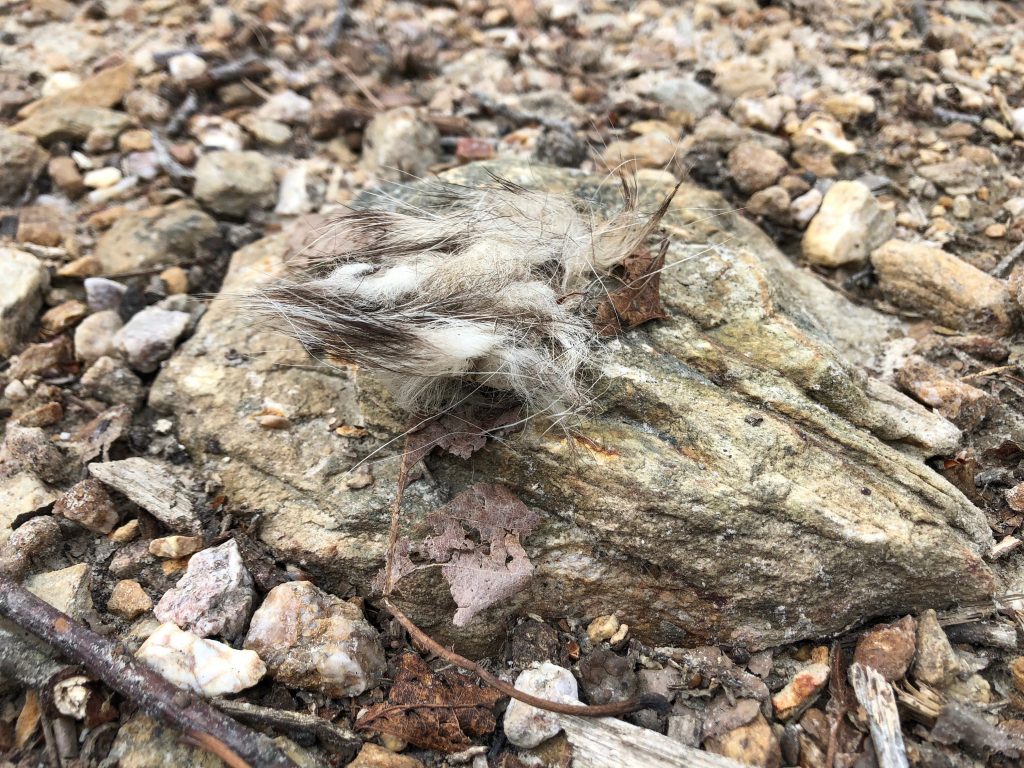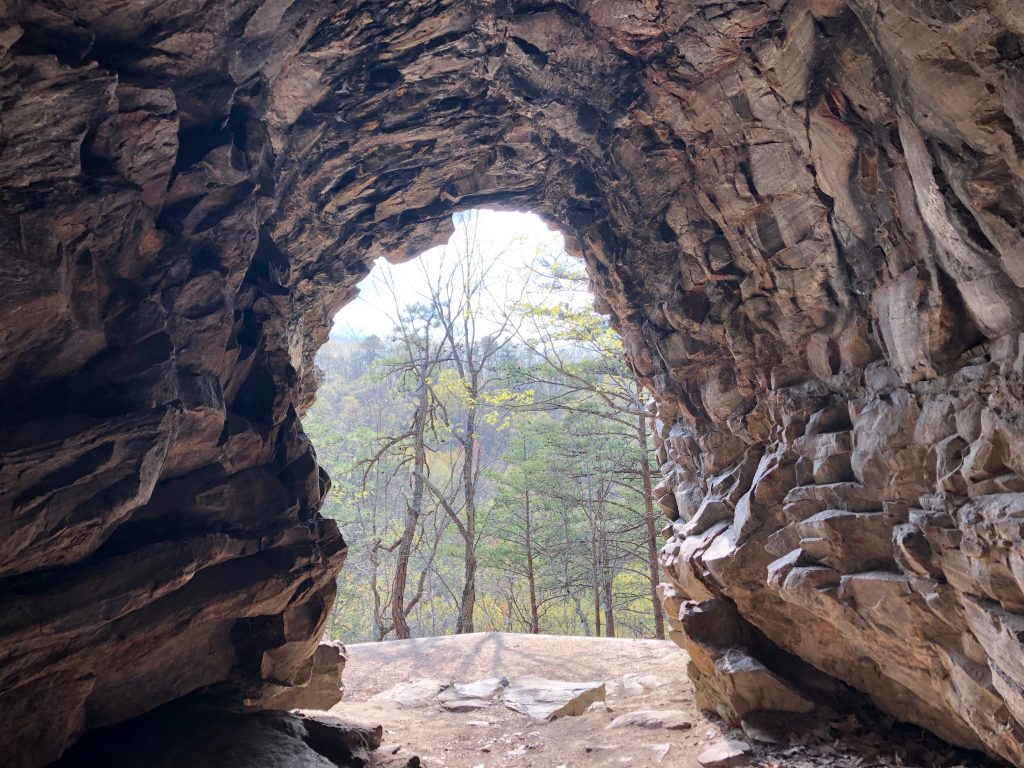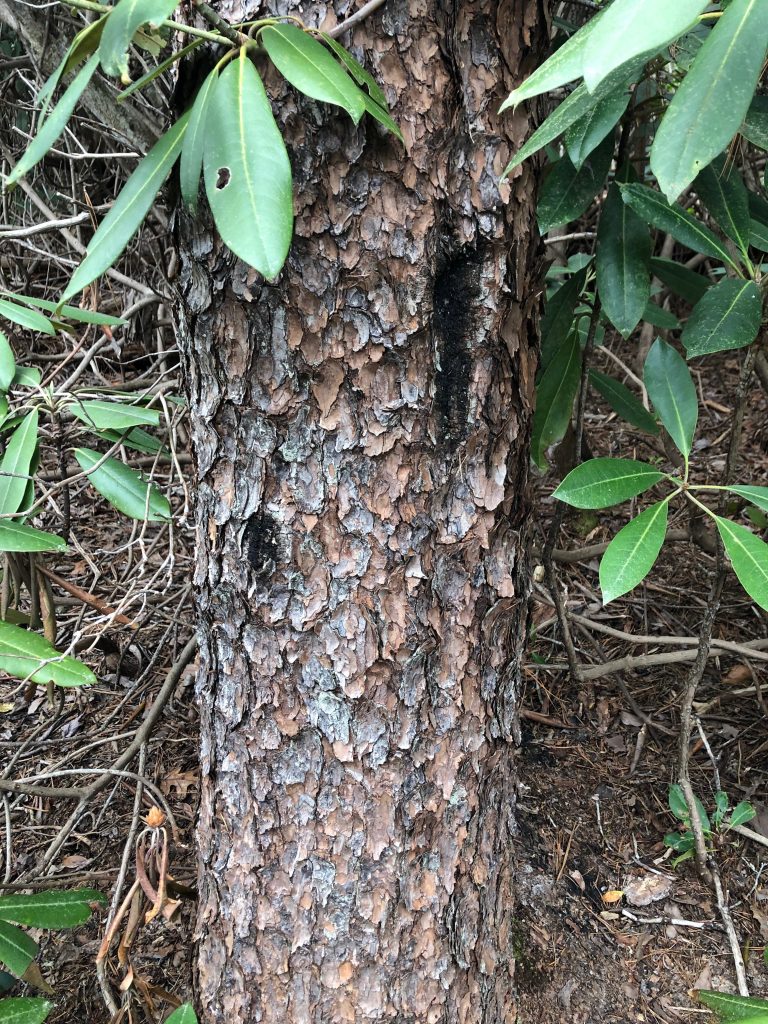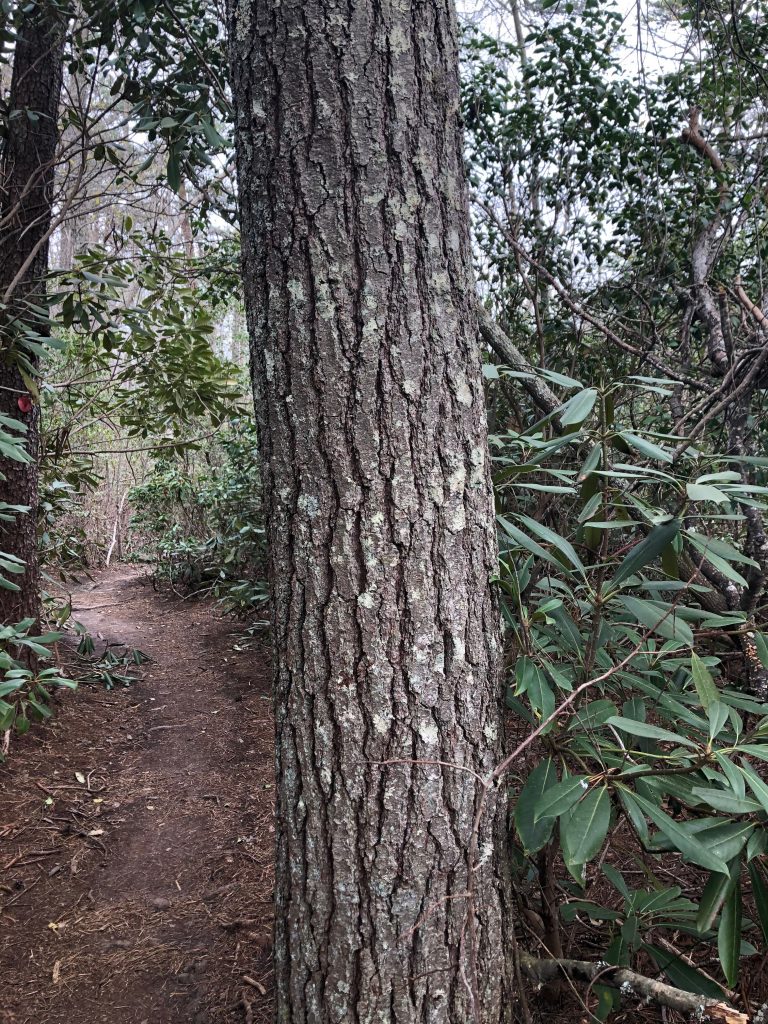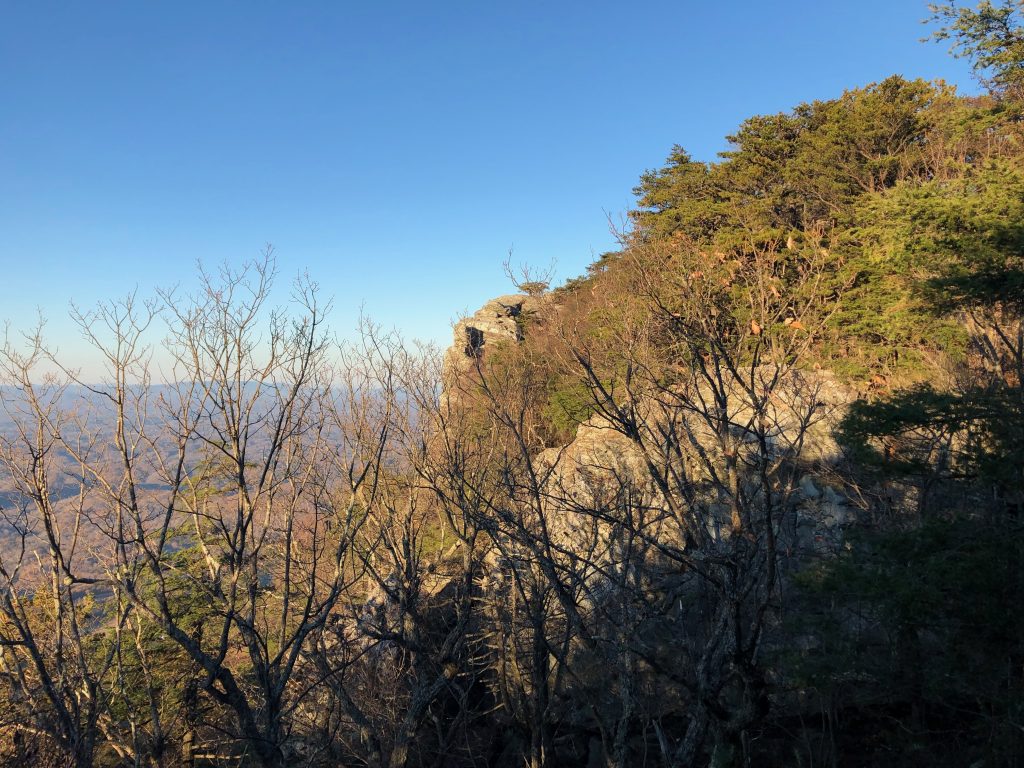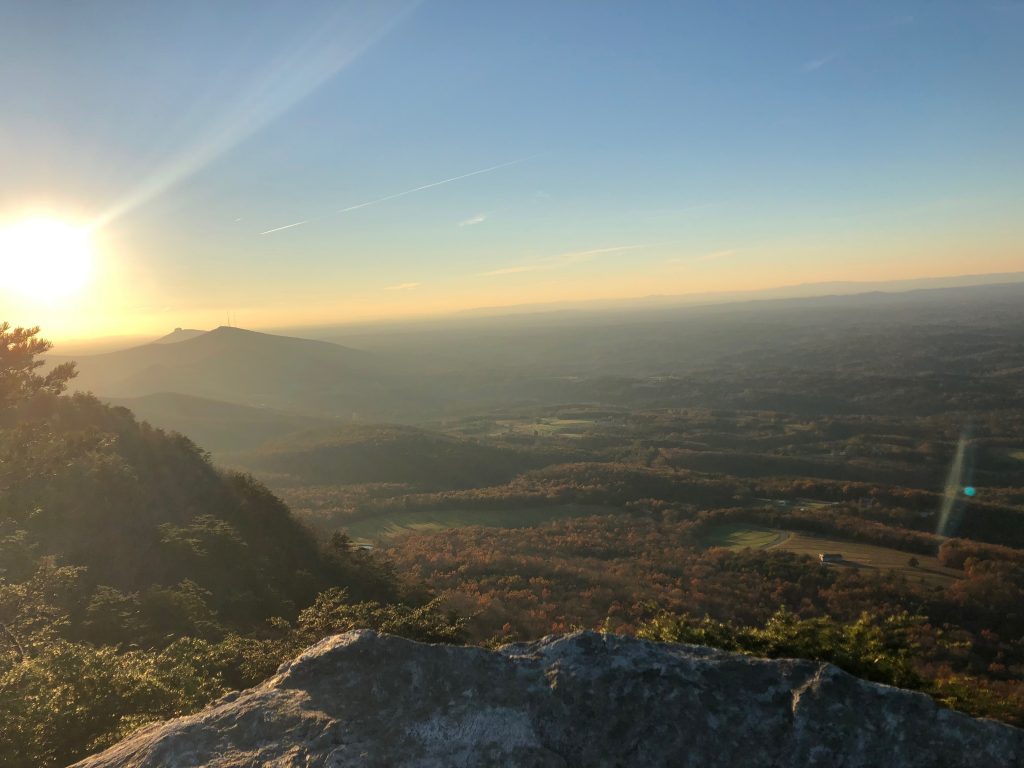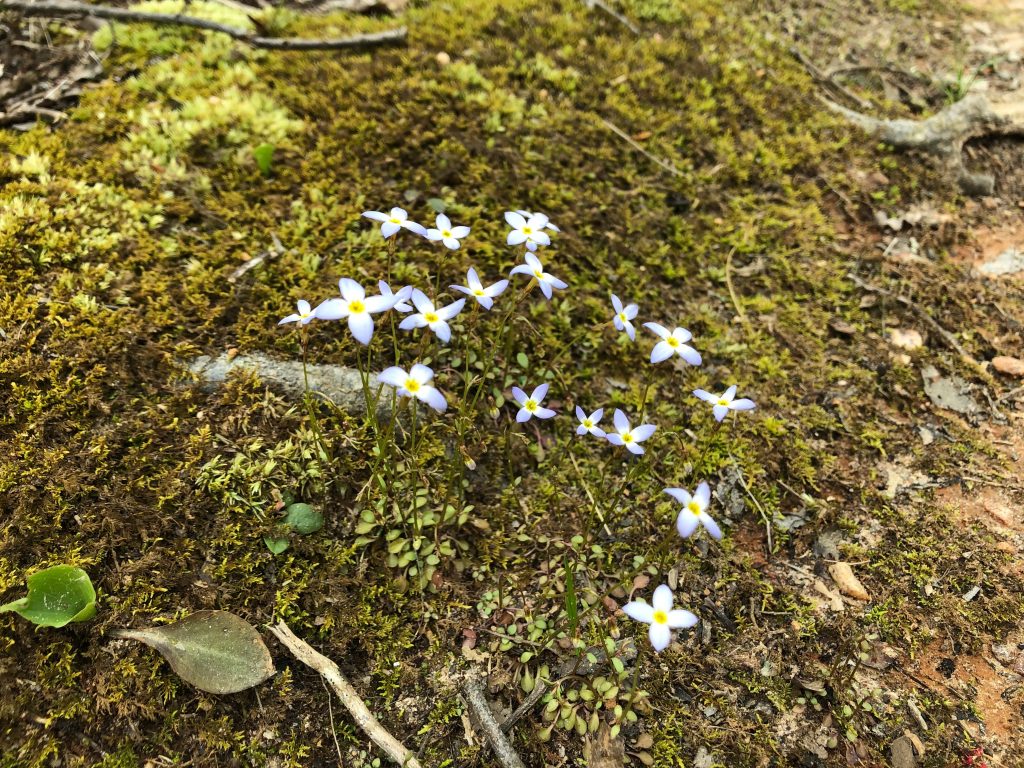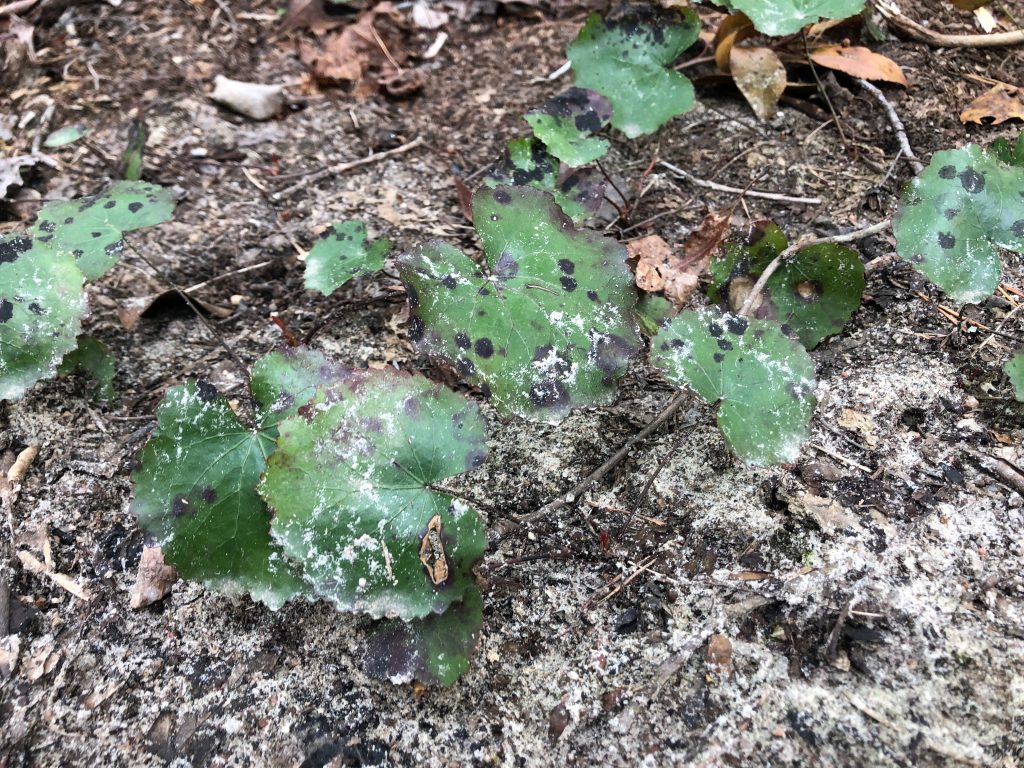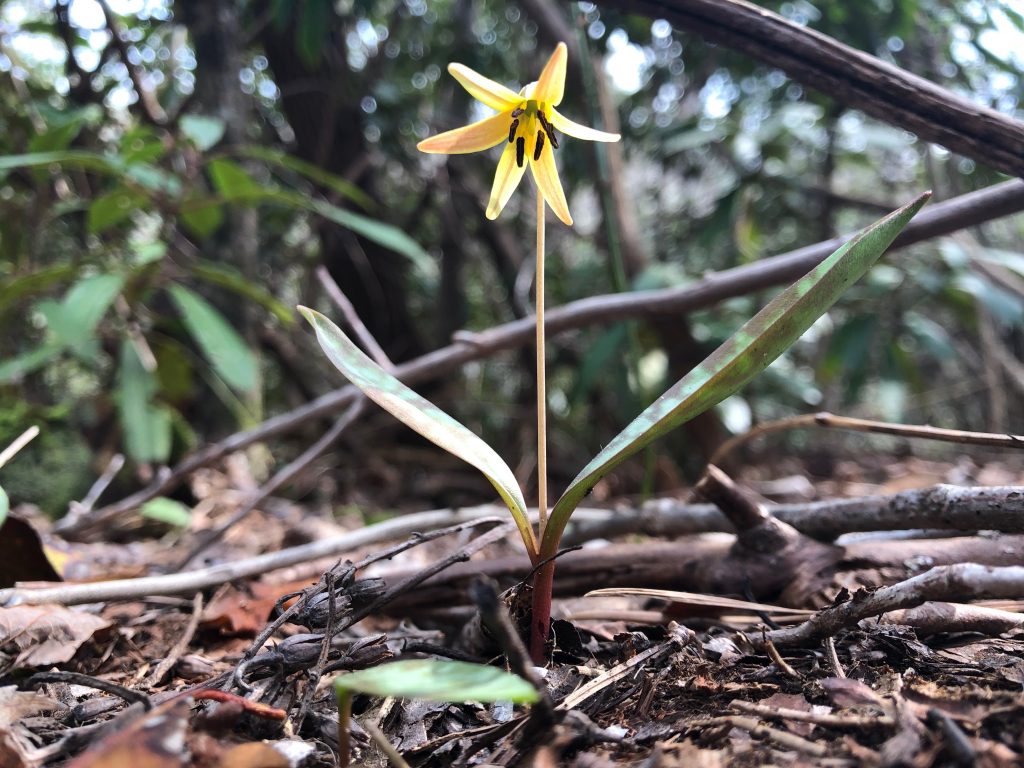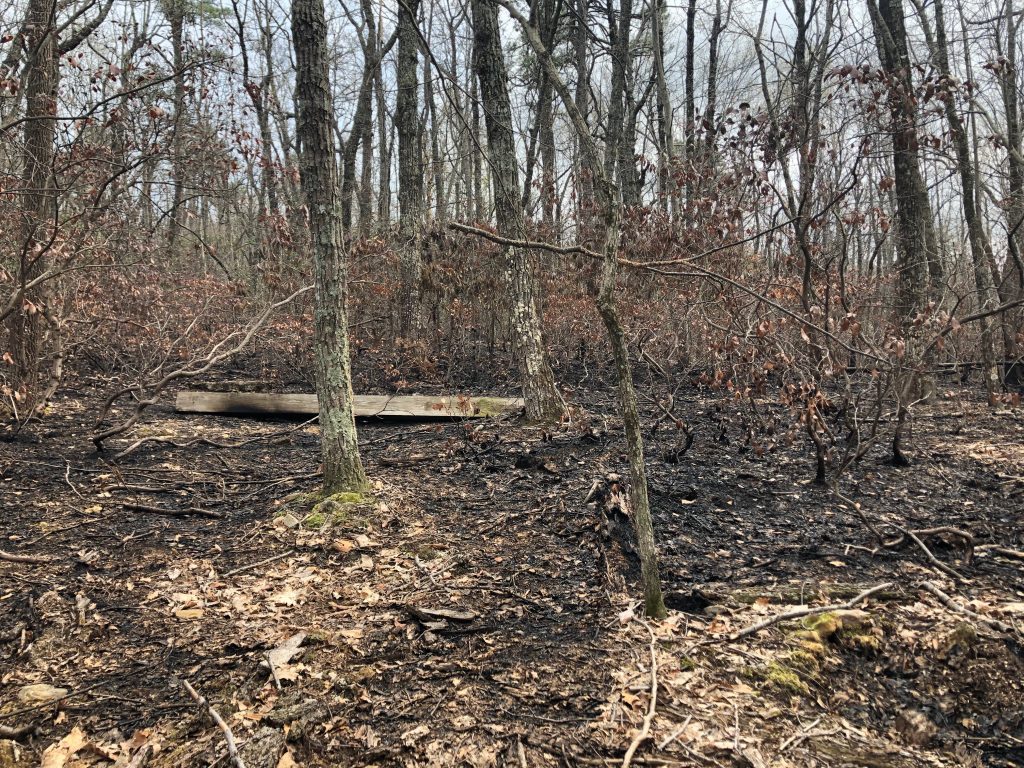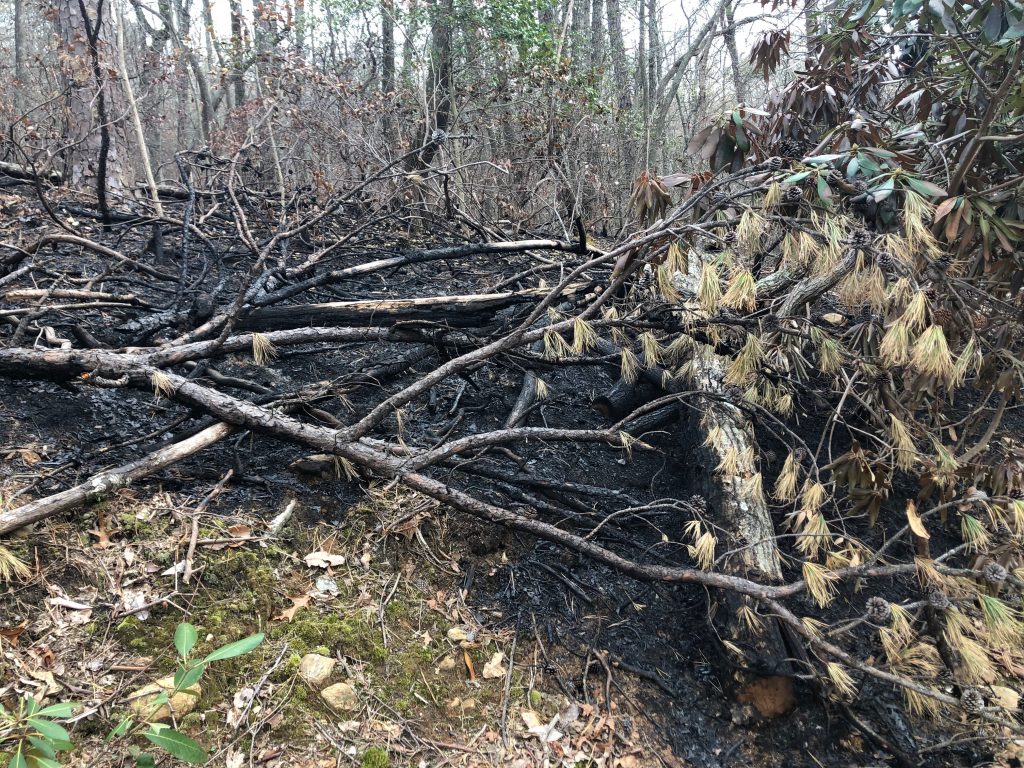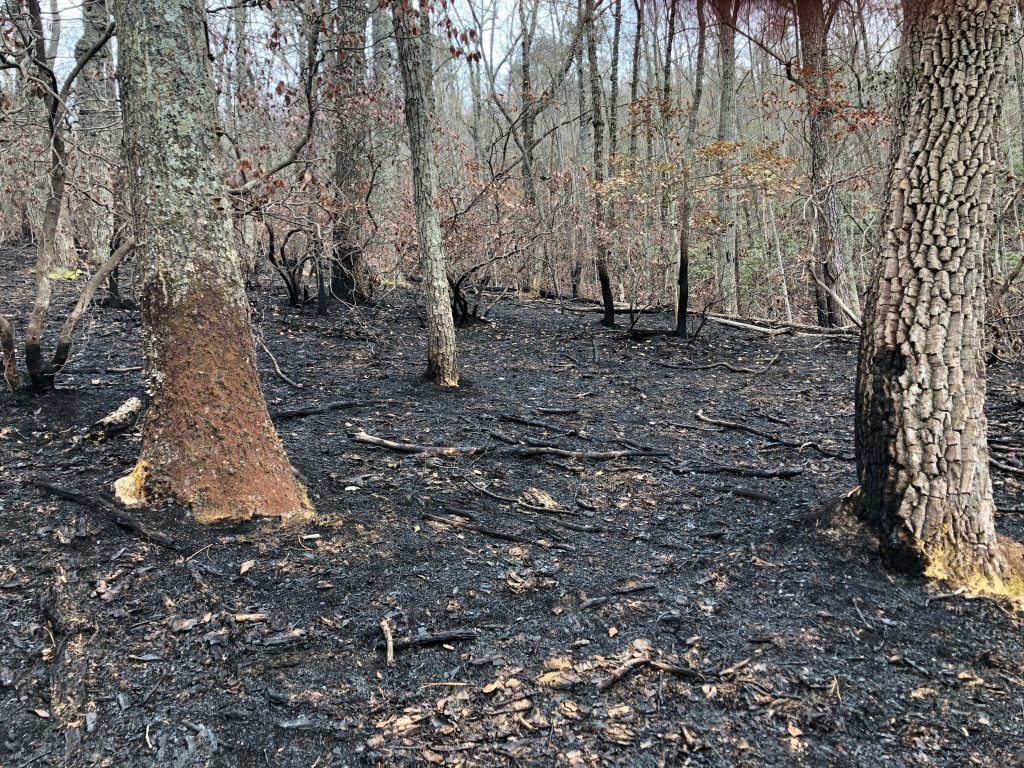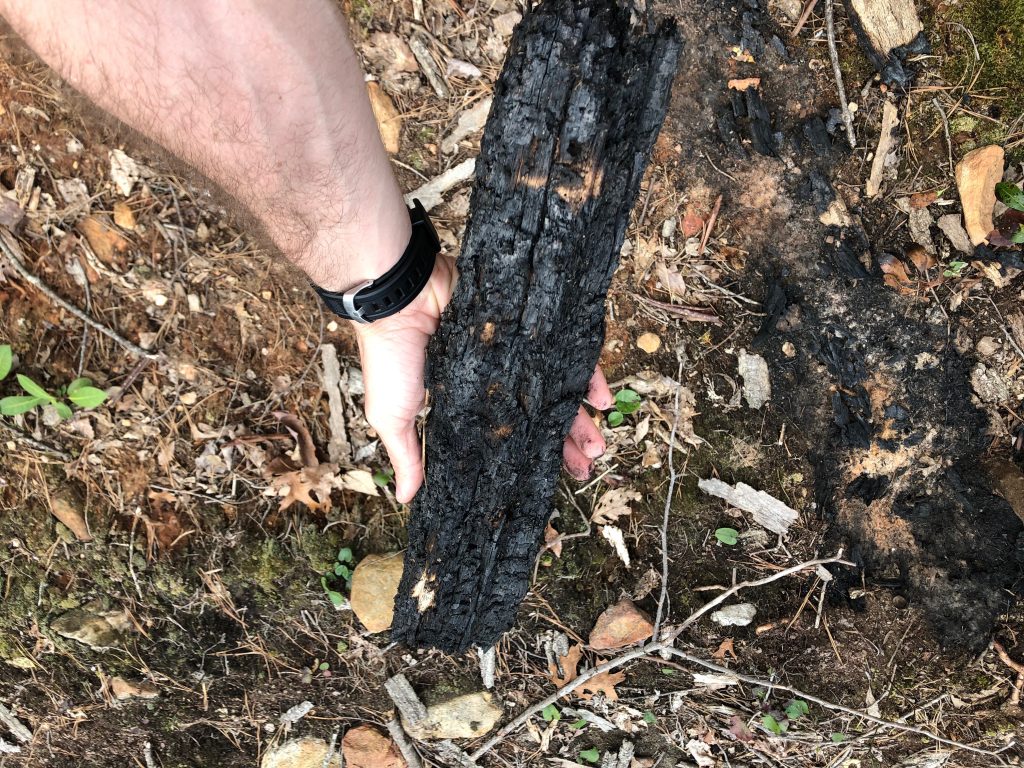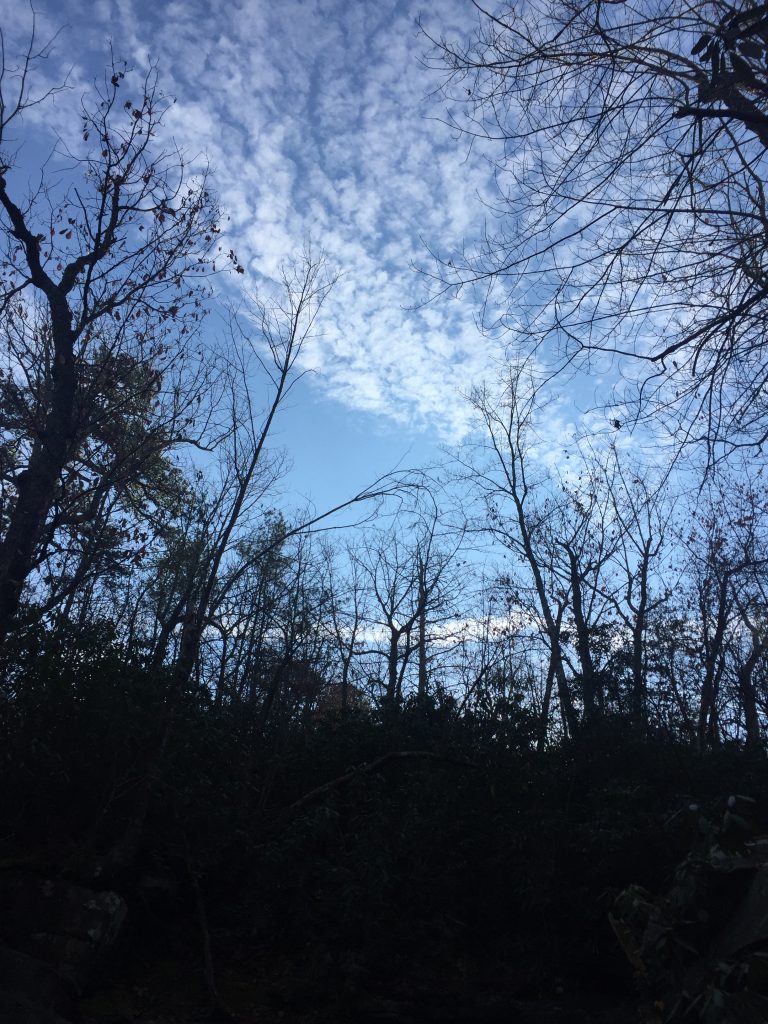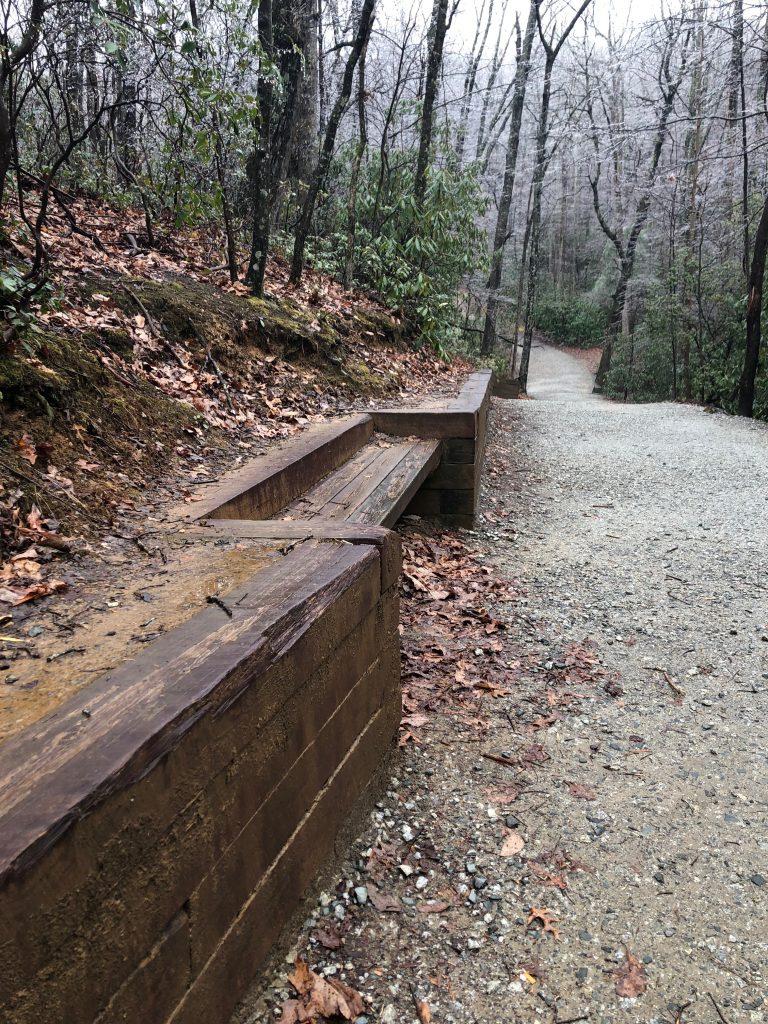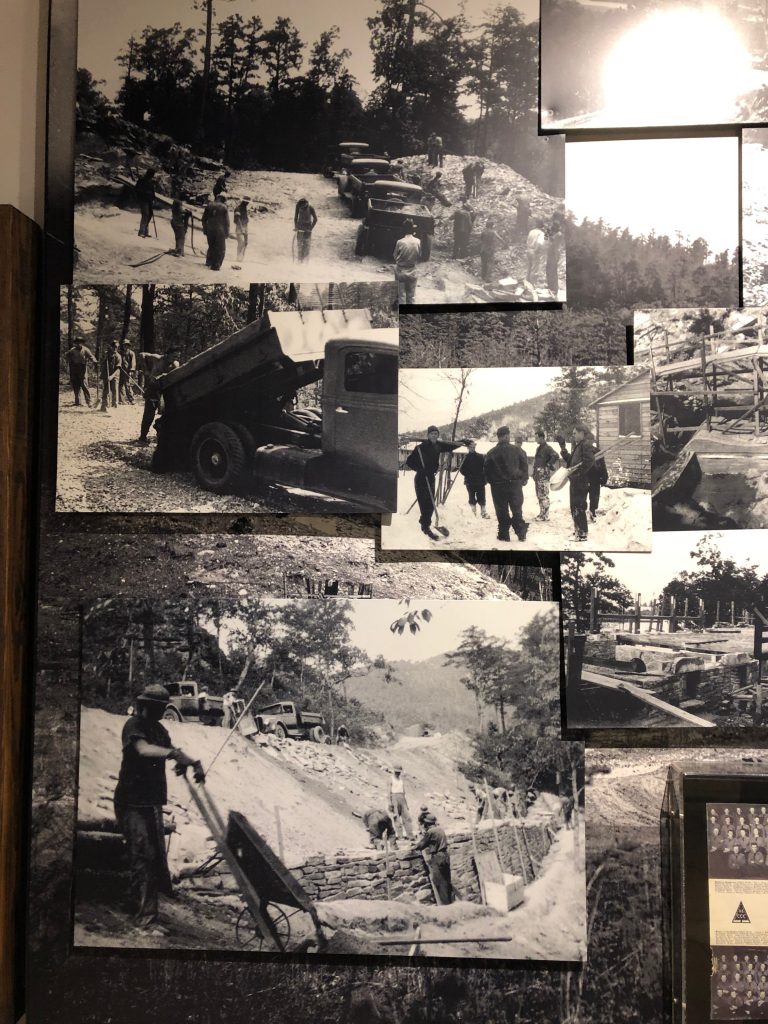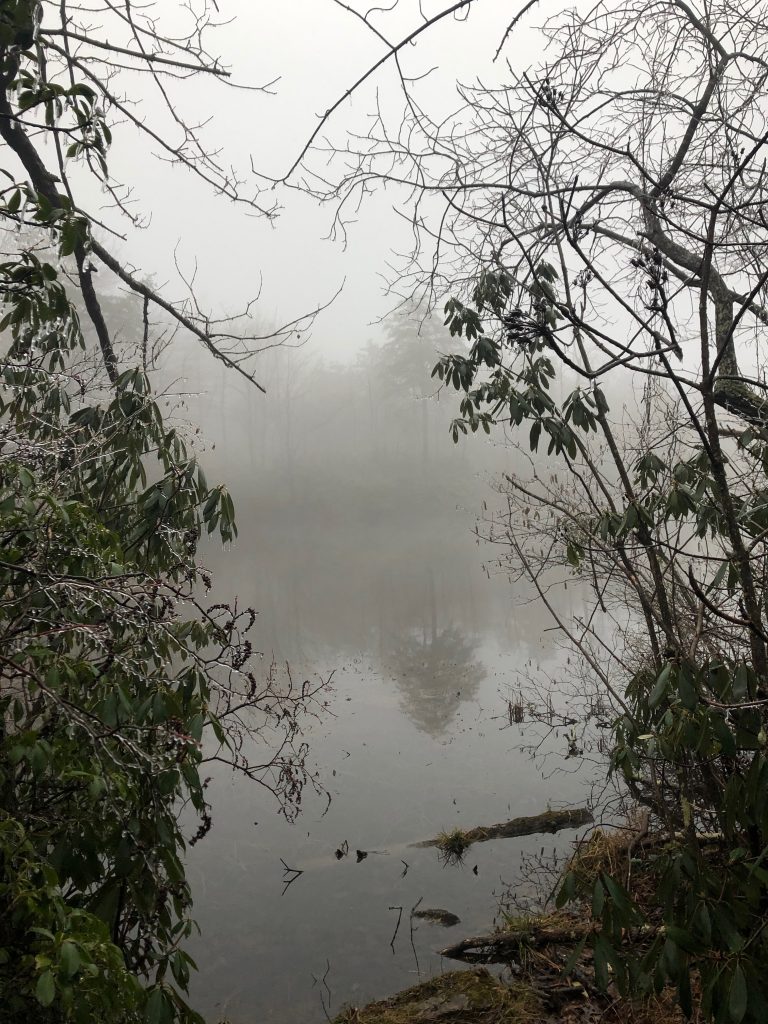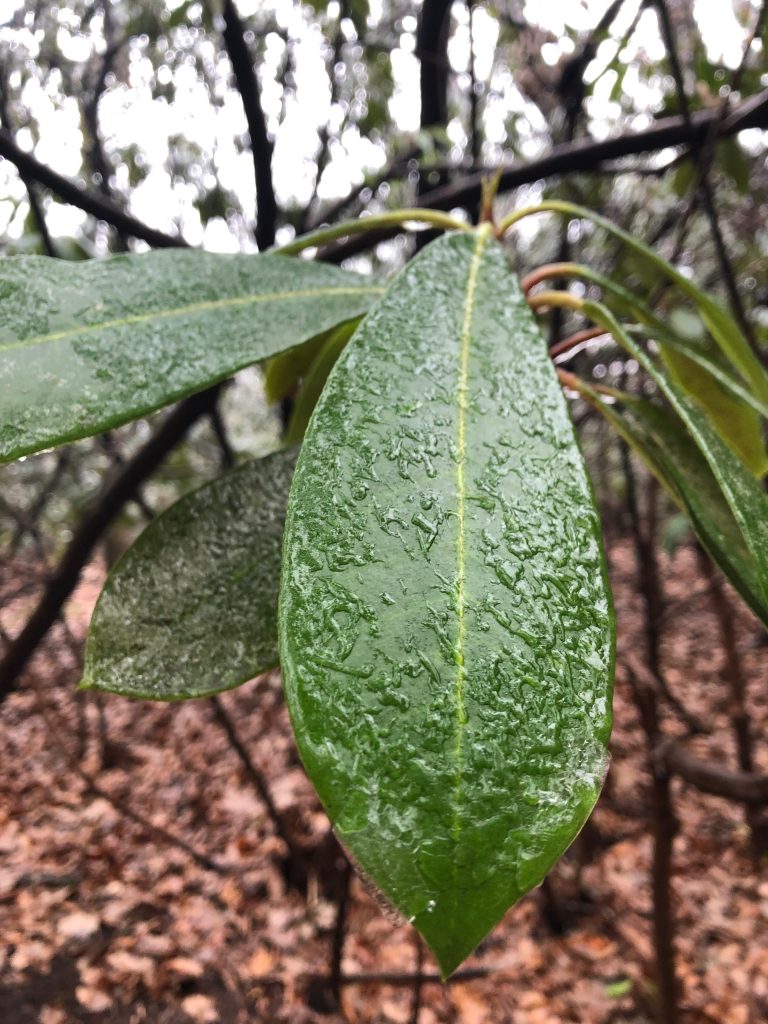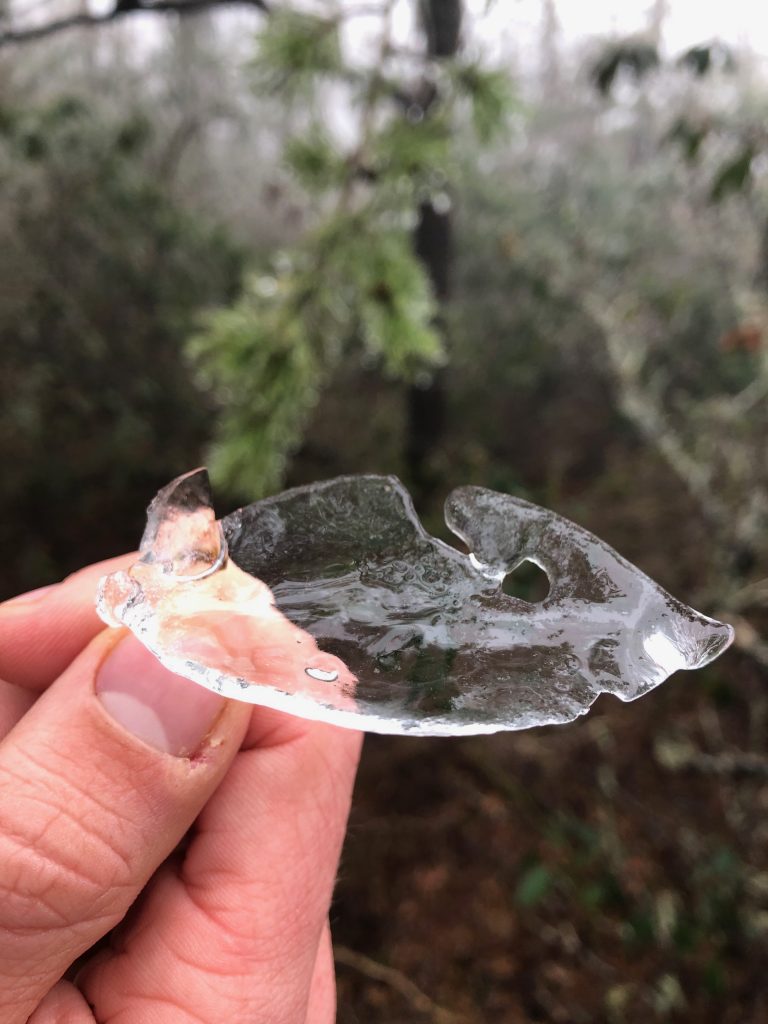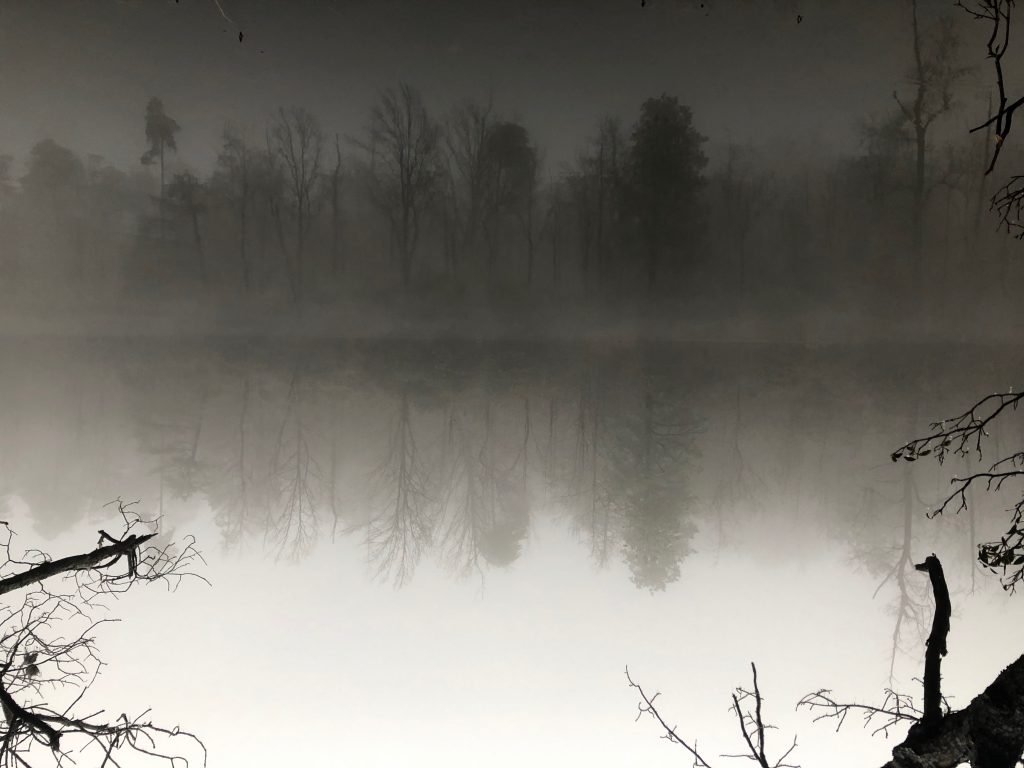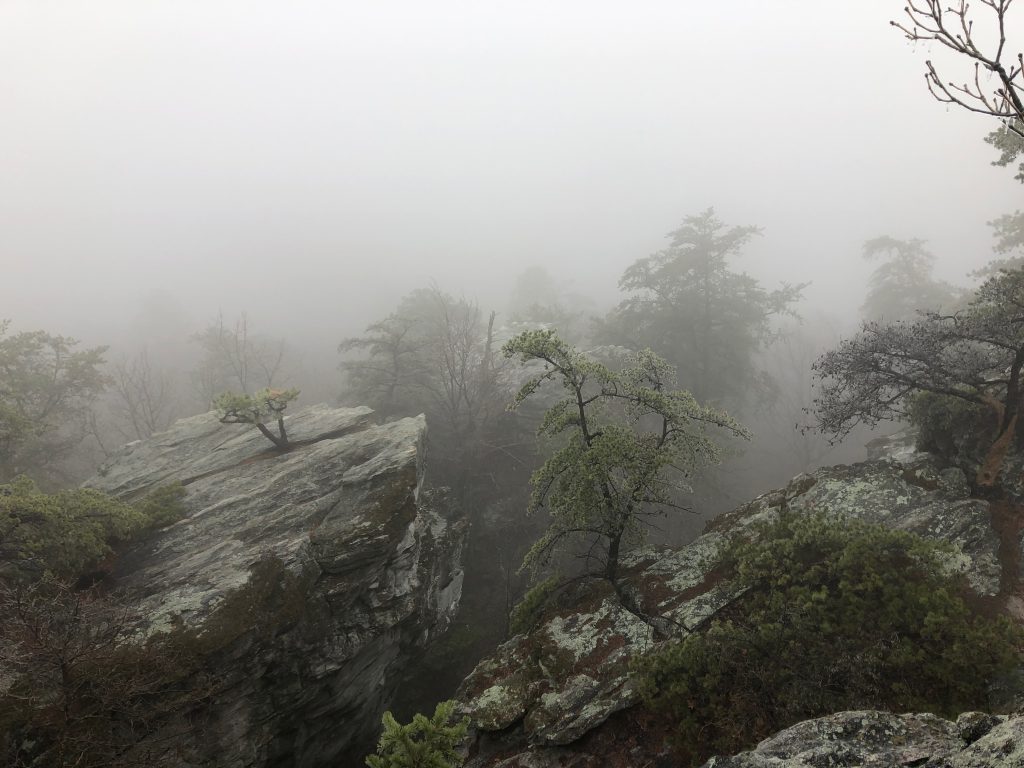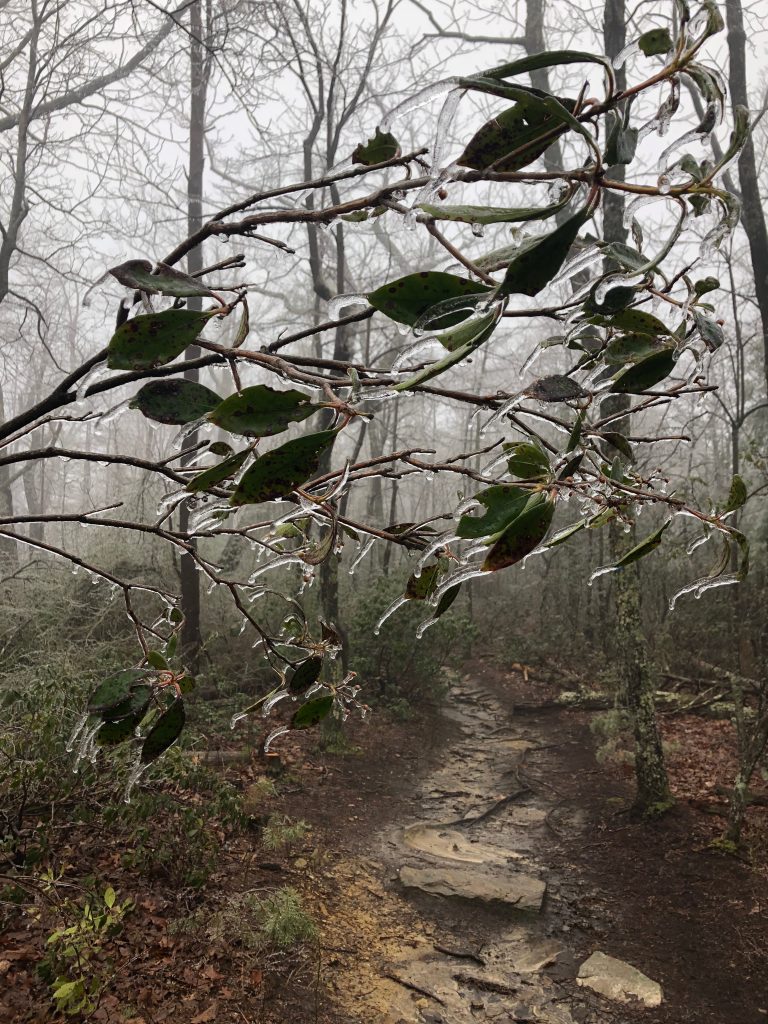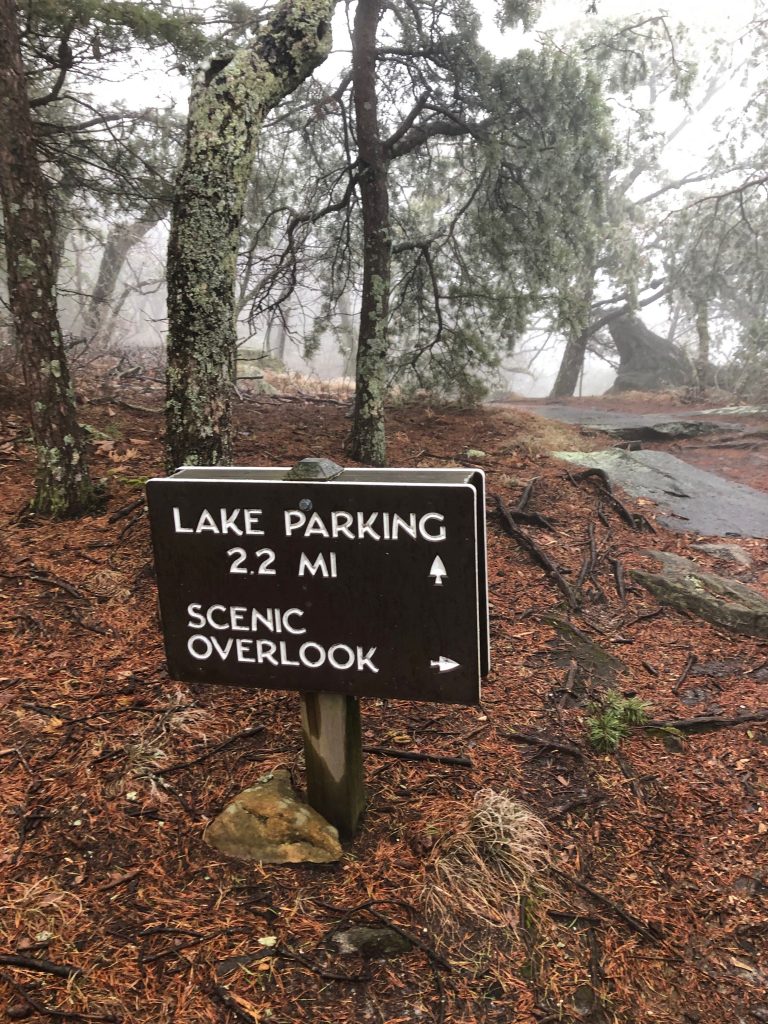As the tree-line recedes, the skyline opens into its full blazing glory. The massive quartzite shelf where Hanging Rock receives its name becomes a looking glass into the beating heart of the Sauratown Mountains. From paved forest road, I leap onto a well-worn gravel trail. Roots had been pushed back to allow the circuitous path to wind its way up towards the peak. Clouds with the consistency of wool roll pass my head, revealing a lucid blue sky capable of soaking you up as if it were a straw. Miniscule red maple leaves (Acer rubrum, L.) were peaking out from branches like prairie dogs, as if curious about the coming of Spring.

With the varying weather conditions of this season, I don’t blame them. The first week of April was marked with a brief snowfall, and now two weeks later the temperatures are climbing high into the 70s. Choosing the right moment to emerge will likely become more difficult, and potentially all the more dangerous. An early spring frost could decimate blooming deciduous tree species like the red maple, setting back centuries of evolutionary adaptations. We will adapt, I suppose, but how can we do so when everything seems so variable?

I perch myself near a small Virginia pine (Pinus virginiana, Mill.) on the edge of Hanging Rock, the void just beyond. Luminous sunlight casts a speculative glow across the quartzite surface, sending shadows shooting across the many twists and turns of the rockface.

I see my own shadow, fifteen meters or so to my right, projected against the surface of a vertical shelf. I get the silly idea to wave to it, knowing full well its obligation to follow my lead. I wonder what I would think if it decided to resist, to fold its arms and turn its back to me. Too often I take its presence for granted, an extension of my being made possible by a burning star 93 million miles away from me. I am tethered to my shadow, obligated to it, and as such, I feel as if it is my duty to acknowledge it every now and then. All of us need acknowledgment, recognition of our breath and our smiles. Although neither are present in my shadow, I know that they are there because I am emitting them. I sing praises of myself, lifting them high above the pinnacle of Hanging Rock, into the vaporous crystal sea above.
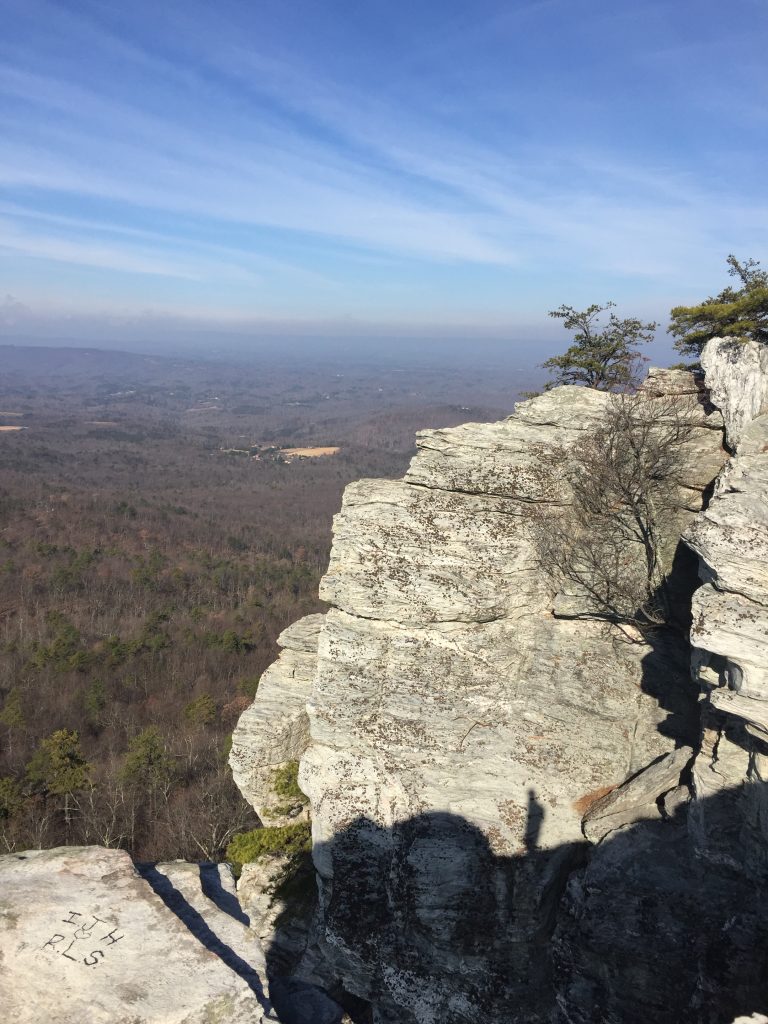
I am nothing but a passenger, buckled into the accelerating vehicle of wilderness careening down this ecological highway. I will keep my eyes glued to the road, anticipating the sights just around the bend. With Hanging Rock behind wheel, I realize that the destination is only the beginning. We have miles to go together, and all the time in the world.

“I crashed into the sea, then somehow I survived. I don’t know what to believe, but I know I’m alive”
